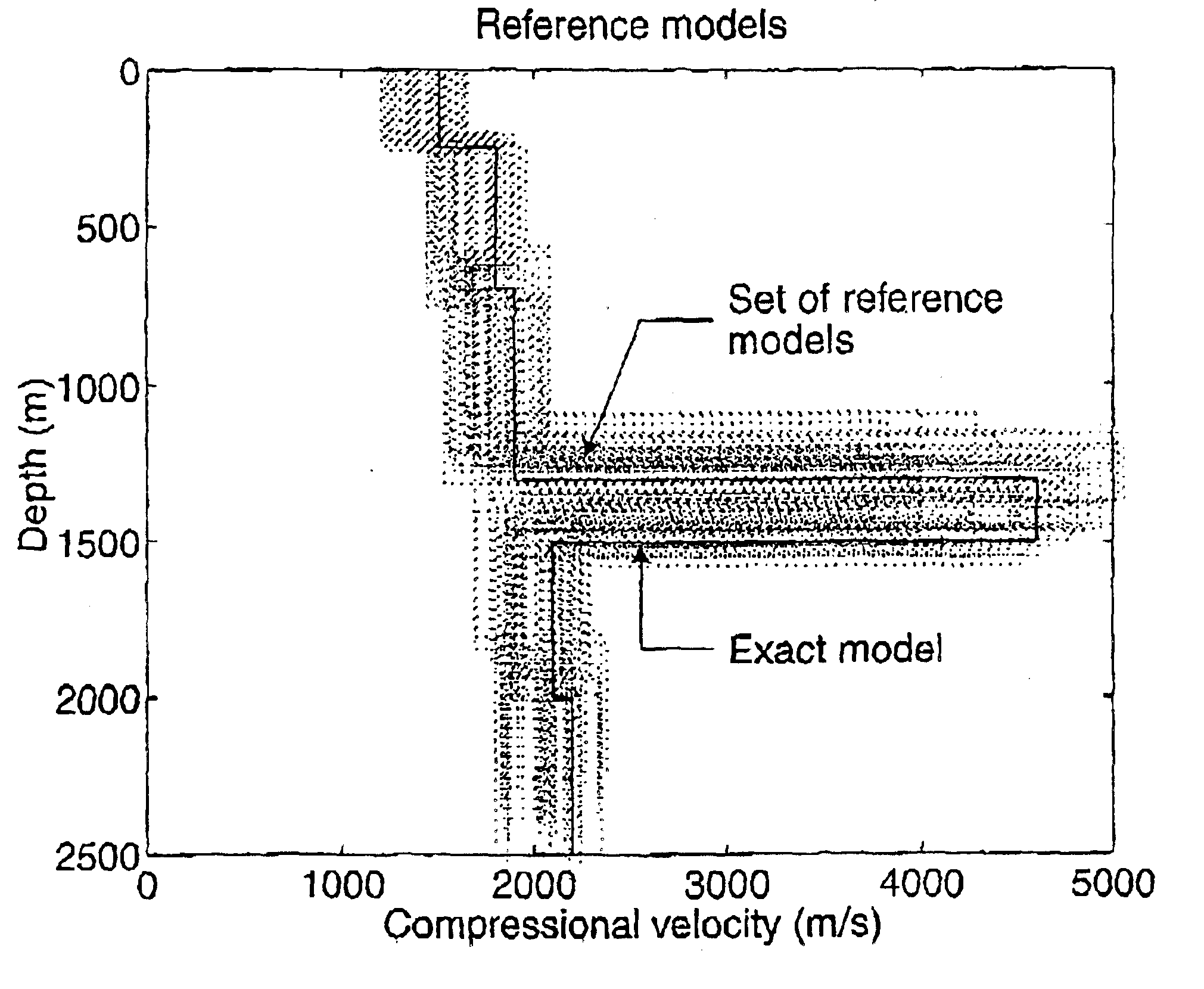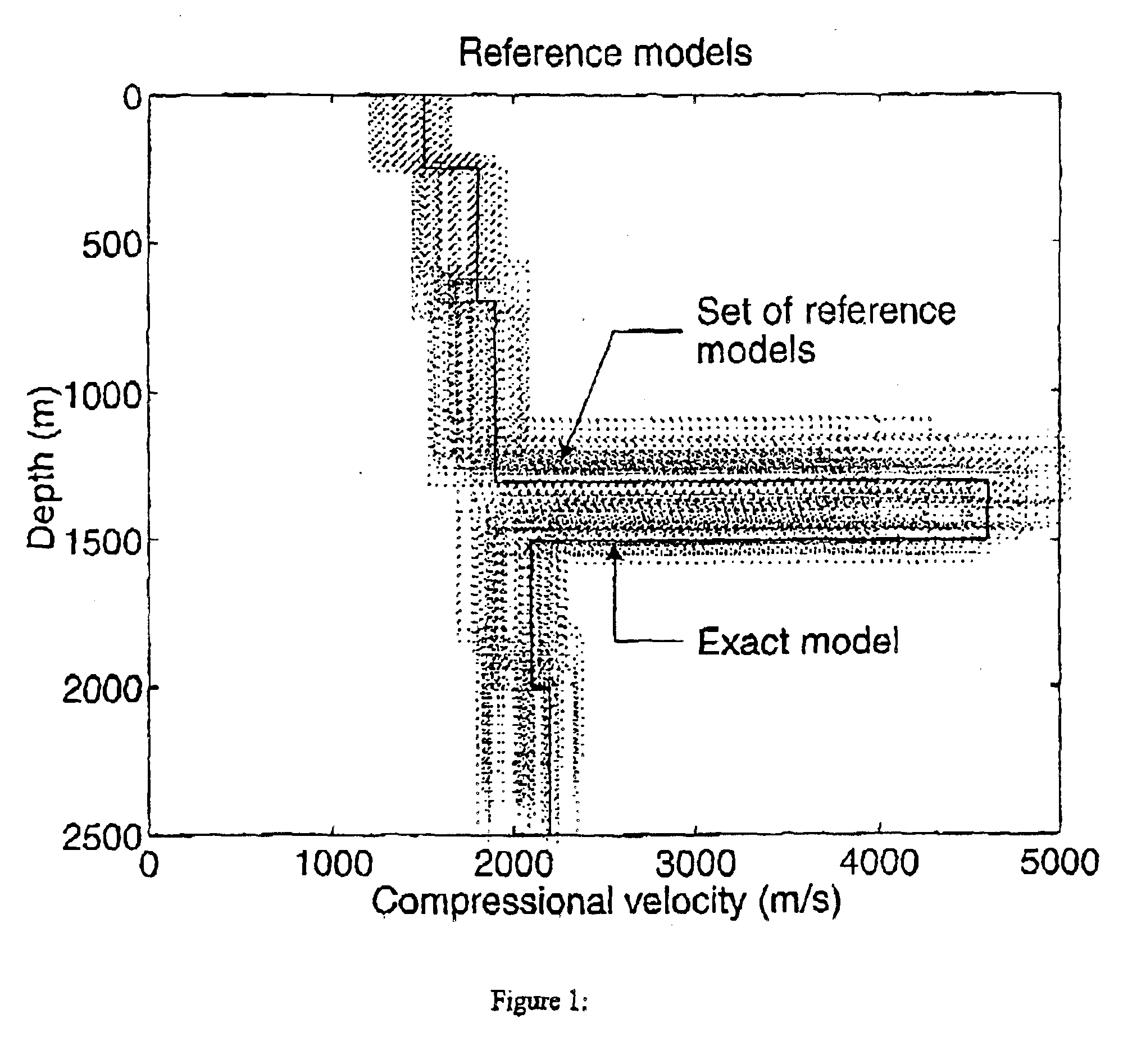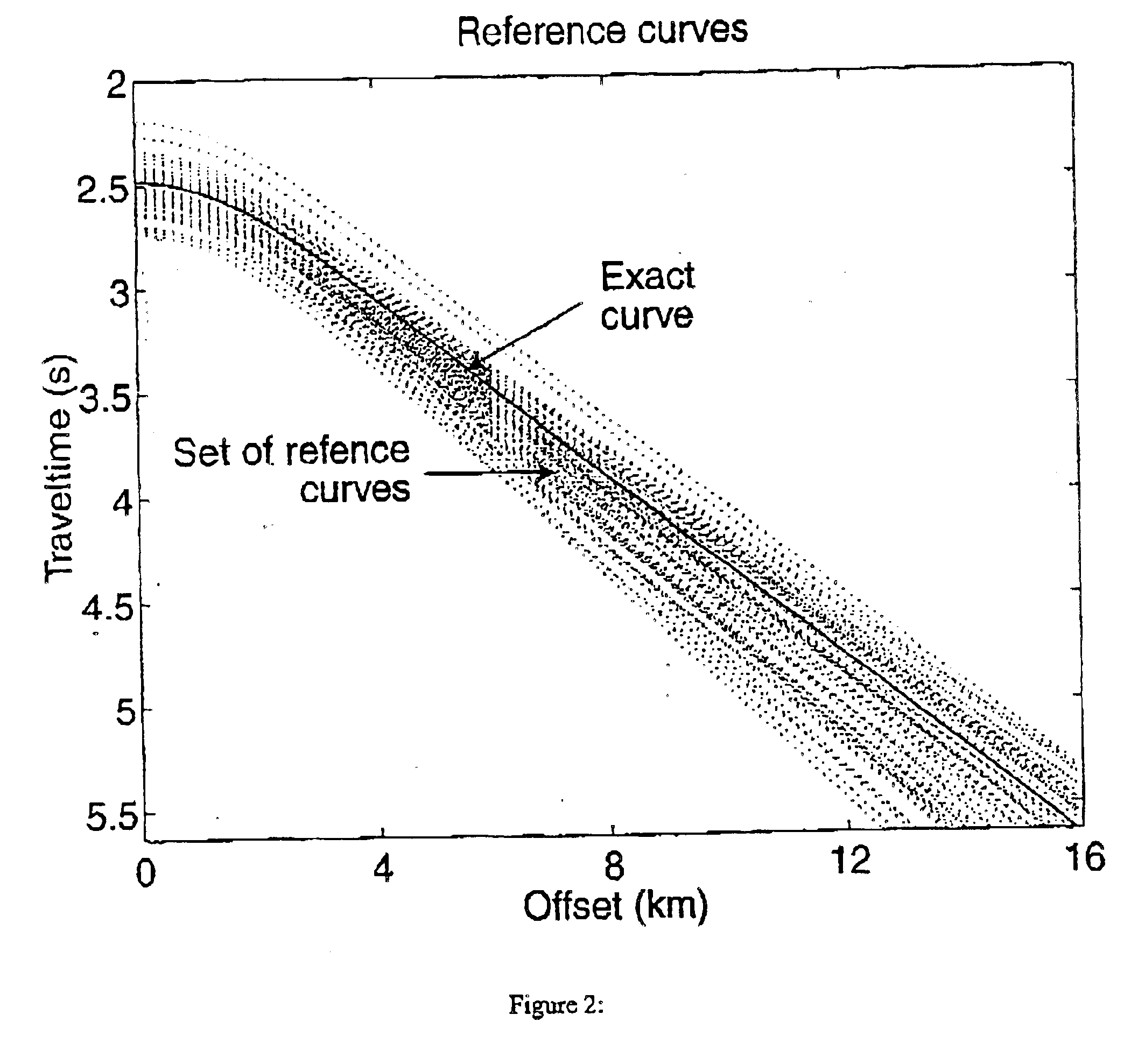Seismic processing with general non-hyperbolic travel-time corrections
a technology of travel-time correction and seismic data, applied in seismology, geological measurements, hardware monitoring, etc., can solve the problems of deteriorating the useful information contained in the data, errors in their estimation, and mathematical functions that are not particularly suited to seismic reflection travel-time, so as to improve the accuracy of seismic travel-time estimates and improve the accuracy of avo intercept estimates.
- Summary
- Abstract
- Description
- Claims
- Application Information
AI Technical Summary
Benefits of technology
Problems solved by technology
Method used
Image
Examples
Embodiment Construction
We explain hereafter how to build a basis of functions of the offset for traveltime approximations according to the present invention.
Reference Velocity Models
We assume that a distribution of possible “reference” background velocity models is available. What we mean by background velocity model is information on the velocity and its variations in the earth, that is sufficient to describe with reasonable accuracy the kinematic of waves in the area of the seismic survey of interest and to construct one-way traveltime curves or two-way reflection traveltime curves for any potential reflector in the model. The models may be plane-layered, i.e. depend on depth z only, two-dimensional (depend on z and one lateral coordinate), or three-dimensional (depend on z and two lateral coordinates). Each model may consist of a P-wave velocity model only (acoustic model). In that case, approximations to one-way or two-way seismic traveltimes can be constructed for compressional waves (P-waves) only. ...
PUM
 Login to View More
Login to View More Abstract
Description
Claims
Application Information
 Login to View More
Login to View More - R&D
- Intellectual Property
- Life Sciences
- Materials
- Tech Scout
- Unparalleled Data Quality
- Higher Quality Content
- 60% Fewer Hallucinations
Browse by: Latest US Patents, China's latest patents, Technical Efficacy Thesaurus, Application Domain, Technology Topic, Popular Technical Reports.
© 2025 PatSnap. All rights reserved.Legal|Privacy policy|Modern Slavery Act Transparency Statement|Sitemap|About US| Contact US: help@patsnap.com



